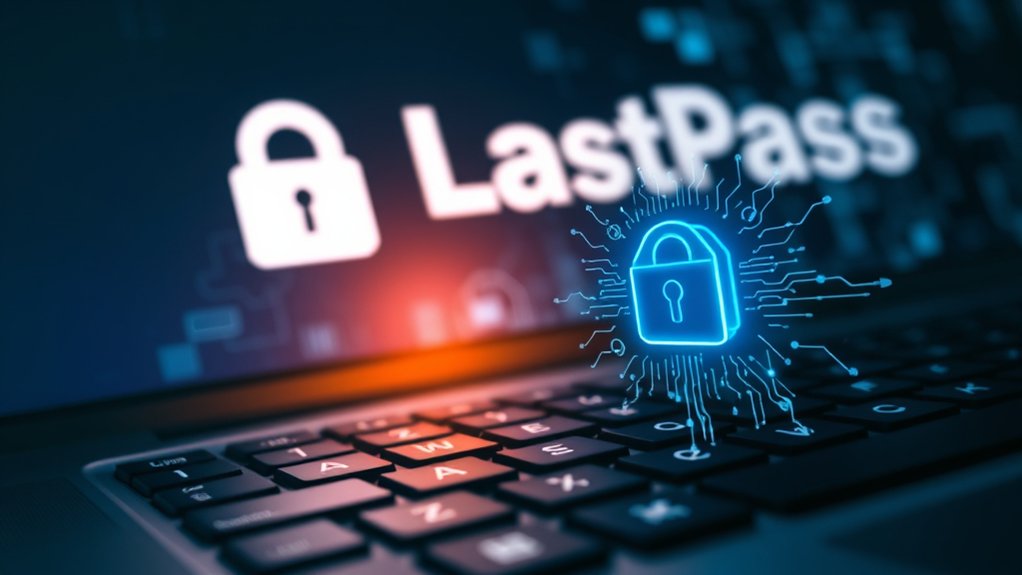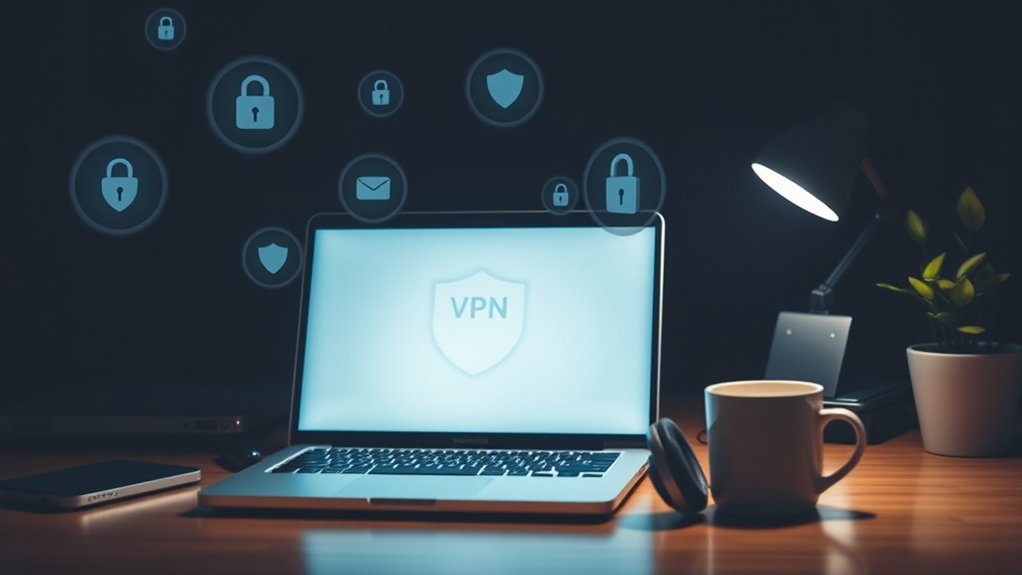LastPass is a leading password management solution designed to improve cybersecurity by securely storing passwords within an encrypted vault. It employs AES-256 encryption and multifactor authentication, greatly reducing the risk of unauthorized access. The platform’s zero-knowledge model guarantees that user data remains inaccessible to LastPass servers. Furthermore, features like dark web monitoring and customizable password sharing empower users to maintain data integrity. As security needs evolve, continuous improvements boost user trust in this crucial tool. Further insights into its functionalities await.

In an era where cybersecurity threats are increasingly prevalent, LastPass provides a thorough solution for password management that highlights the importance of safeguarding personal and organizational data. This platform allows users to securely store passwords through an encrypted vault, utilizing AES-256 encryption and PBKDF2 hashing with SHA-256 salting. Additionally, LastPass features a password vault that securely encrypts stored information, which further enhances data protection. Password managers like LastPass promote the use of complex and unique passwords, encouraging users to create tailored passwords for every account and reduce security risks.
With a zero-knowledge model, LastPass guarantees that user data remains inaccessible even to its own servers, improving overall security. To further protect accounts, LastPass incorporates multifactor authentication (MFA) options, including SMS, fingerprinting, and facial recognition. These features strengthen login security, making it challenging for unauthorized parties to gain access.
LastPass employs a zero-knowledge model and multifactor authentication to ensure user data remains secure and inaccessible to unauthorized parties.
Furthermore, LastPass improves collaboration through password sharing, allowing users to customize permissions within shared folders. This flexibility is particularly beneficial for organizations managing multiple users and sensitive information. LastPass also offers multiple pricing plans that include core features like password sharing and multi-factor authentication, catering to diverse user needs.
Despite the advantages, LastPass has faced scrutiny over past security breaches that impacted its reputation. Nonetheless, the company has implemented several strong security measures, including routine security audits conducted in partnership with third-party organizations and dark web monitoring to alert users about compromised credentials.
As organizations increasingly adopt digital solutions, such risks underscore the need for vigilant cybersecurity strategies. LastPass likewise provides advanced security features such as Single Sign-On (SSO) and dynamic authentication, allowing for seamless user experiences while maintaining high security standards.
The platform supports integrations with tools like Splunk and Microsoft Sentinel for advanced reporting, guaranteeing organizations can monitor their cybersecurity environment effectively. Although historical breaches have raised concerns, LastPass continues to attract users, highlighting transparency and user data protection.
The commitment to encryption and user privacy builds trust in a competitive market amid various offerings from other password managers. Consequently, LastPass not only serves as a password manager but as a critical element in improving cybersecurity frameworks for individuals and organizations alike.
Frequently Asked Questions
Is Lastpass Free or Does It Require a Subscription?
LastPass offers both free and paid subscription options. The free plan permits users to store an unlimited number of passwords, but restricts access to a single device.
Conversely, premium subscriptions improve functionality with multi-device synchronization, advanced security features, and encrypted file storage. Expert analyses underscore the necessity of premium plans for thorough cybersecurity measures.
Businesses may likewise choose team or enterprise plans, which provide collaborative password management tools.
Can Lastpass Store Passwords for Multiple Devices?
LastPass effectively facilitates password storage for multiple devices. The service allows automatic synchronization across various platforms, including smartphones, tablets, and computers.
Users benefit from access to organized password vaults, bolstered by a zero-knowledge security model employing AES 256-bit encryption. This multi-device capability improves user convenience by eliminating the need to remember numerous passwords.
Consequently, individuals can manage their credentials fluidly across devices, reflecting LastPass’s commitment to secure, accessible password management.
How Does Lastpass Handle Password Recovery?
LastPass employs a zero-knowledge security model for password recovery, ensuring the master password does not leave the user’s device.
Recovery options include an email link, SMS codes, and biometric authentication, reinforcing security measures. During this process, client-side encryption maintains data integrity, preventing LastPass from accessing users’ sensitive information.
To improve recovery effectiveness, users should proactively set up options and perform regular security checks to optimize account protection and accessibility.
What Happens if I Forget My Lastpass Master Password?
Forgetting the LastPass master password presents significant challenges, as it is crucial for accessing the vault.
LastPass employs a zero-knowledge security model, which means it does not store user passwords, thereby complicating recovery efforts. Without a direct reset option, users must rely on previously established backup measures.
Experts recommend regularly updating and creating memorable passphrases to mitigate these risks. Furthermore, enabling backup options is vital for maintaining access in such scenarios.
Is Lastpass Available on All Operating Systems?
LastPass is compatible with multiple operating systems, including Windows, macOS, and Linux for desktop users. It offers mobile applications for both iOS and Android, extending accessibility.
Furthermore, it supports Apple Watch through a dedicated version, albeit with limited features. Users can access LastPass via browser extensions, compatible with Chrome, Firefox, Edge, Opera, and Safari, enhancing its versatility.
Nevertheless, limitations exist for free users concerning device usage and customer support access.









